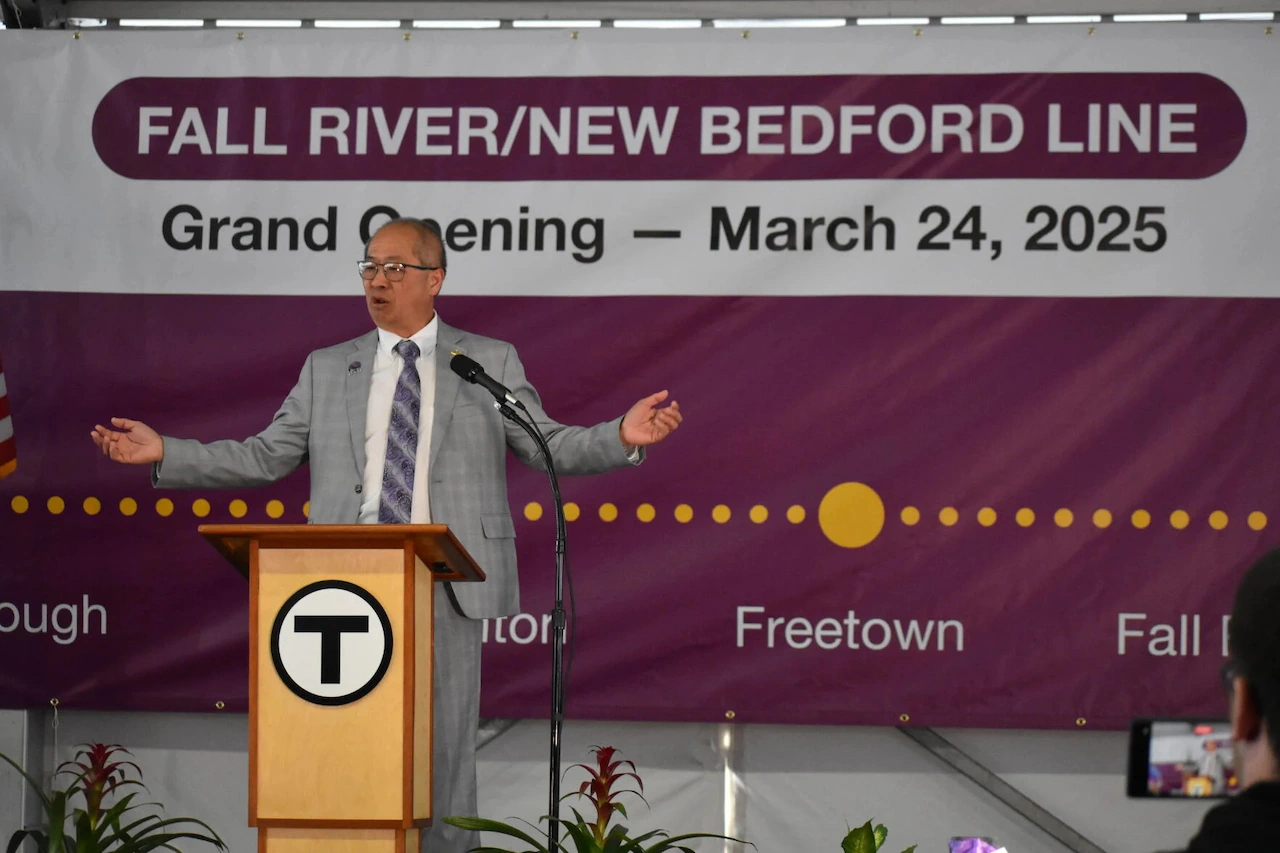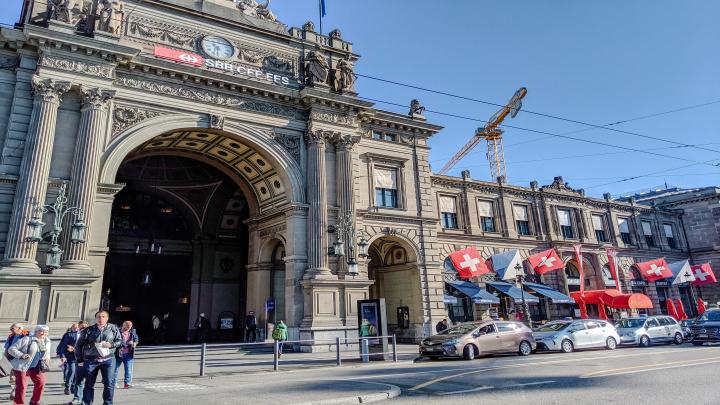
MBTA General Manager Phillip Eng still gets goose bumps when he watches the hype video the agency produced last year to celebrate its completion of decades’ worth of repairs in just over a year, he said this week.
In November 2023, about eight months after Gov. Maura Healey appointed Eng to take over the beleaguered T, the new general manager made a promise to clear a yearslong backlog of maintenance work by the end of 2024.
The undertaking would mean addressing over 220 “slow zones” because a lack of track maintenance made full speed impossible. The subway system hadn’t been slow-zone-free in more than two decades, as far back as the MBTA’s records on the subject went, the agency said in December when the repairs were completed.
Speaking Monday at a national public transit conference in Boston, Eng and a group of his top deputies shared a behind-the-scenes glimpse at what it took to accomplish what they described as 40 years of work in just 14 months.
Completing that volume of repairs on schedule took a combination of creative planning, new tactics and many long hours and late nights of repair work, they told an audience of about 200 people gathered at the Menino Convention and Exhibition Center for the American Public Transportation Association’s TRANSform conference.
The repairs program was about more than rebuilding train tracks, stations and bridges. It was also about reestablishing the public’s trust in the T, MBTA Chief Operating Officer Ryan Coholan told the crowd.
The agency had weathered a series of serious safety lapses in the years preceding the maintenance updates, drawing the scrutiny of federal transit authorities.
A man was dragged to his death in April 2022 when his arm was caught in the door of a Red Line train as he disembarked. A pair of Green Line trains collided two months later when one driver did not stop as signaled. Later that summer, an Orange Line train caught fire while crossing the Mystic River.
“The worst thing that could have happened was we embark on this program and fall short,” Coholan said. “We couldn’t afford to fall short.”
Salina Martin, the T’s director of operations project delivery, told the audience she learned about the maintenance surge, known as the Track Improvement Program, when it was announced to the public.
To beat its self-imposed deadline, the T closed vast sections of its subway lines for days and sometimes multiple weeks at a time. In place of train service, it established shuttle bus routes.
With the train tracks quiet, MBTA maintenance crews and contractors could work uninterrupted around the clock, allowing projects to advance more quickly than usual.
Troubled sections of track were addressed in order of severity; the sections of greatest need were replaced first. But the T also got creative with how it scheduled work.
Officials looked to spread out projects so no one group of riders “felt the pain for too long,” Eng said. They planned around special events, such as the Boston Marathon. Work in tunnels could be completed in the winter. Busy sections of track in the heart of the city underwent construction during the summer, when the student population was absent and shuttle bus costs were lower.
The T seized on shutdown periods to complete as much track work as possible, while also fitting in station repairs and other projects that wouldn’t be possible with riders using the system.
As maintenance crews went to work on old sections of railroad, they also discovered additional areas needing repair. MBTA project managers and engineers staffed job sites round-the-clock, allowing crews to receive swift answers to issues as they arose, Martin said.
Quality checks that had typically been done in the T’s offices were instead completed “all in real time,” John D. Ray, the T’s senior director of maintenance of way, said.
If work crews were ahead of schedule and had time to complete unplanned repairs on a section of track that was already shut down, the T jumped at the chance.
If it wasn’t immediately clear where the money for extra work and materials would come from, “We said, ‘Do it, we’ll worry about the budget later,’” Eng said.
“We took every opportunity to do more and more and more,” Ray said.
The volume of work was not immediately clear when Eng committed to ridding the transit network of slow zones by the end of 2024, Ray said.
“The schedule Phil committed to was developed in advance before we knew what we actually had to fix,” he said.
To keep on schedule, contractors who finished work late could be charged $100,000 per day, MBTA Chief Engineer and Assistant General Manager Sam Zhou said.
Those were “generous” terms, given how costly delays could be, he said. Running the shuttle buses could cost the T more than $1 million per day in some areas, in addition to lost revenue for offering the service fare-free.
Of the roughly 26 shutdowns the T imposed for repairs during the Track Improvement Program, all but one finished on time, Zhou said.
He didn’t name the contractor, but he said one company on that project was replaced for the remainder of the work and not invited back.
“I made the decision,” Zhou said. “That contractor had to go.”
On the whole, contractors “really stepped up,” Ray said. “They were coming from a way of doing business that was completely different. It was a ‘give us the work and then get out of the way’ type of attitude. And we made it a partnership.”
The MBTA declared its network slow zone free about two weeks before the end of last year, while cautioning that speed restrictions were bound to pop up in the future as everyday maintenance issues arose.
By the end of the project, the T had repaired over 248,000 feet of railroad — about 47 miles, it said.
The agency continued its work this year, pledging to stay ahead of repairs before they became long-term issues. Data shows a notable improvement in train speeds and travel times, particularly on the Red and Orange lines.
“We love to share this story, because it truly is a demonstration of can-do, will-do and can always do better,” Eng said.



